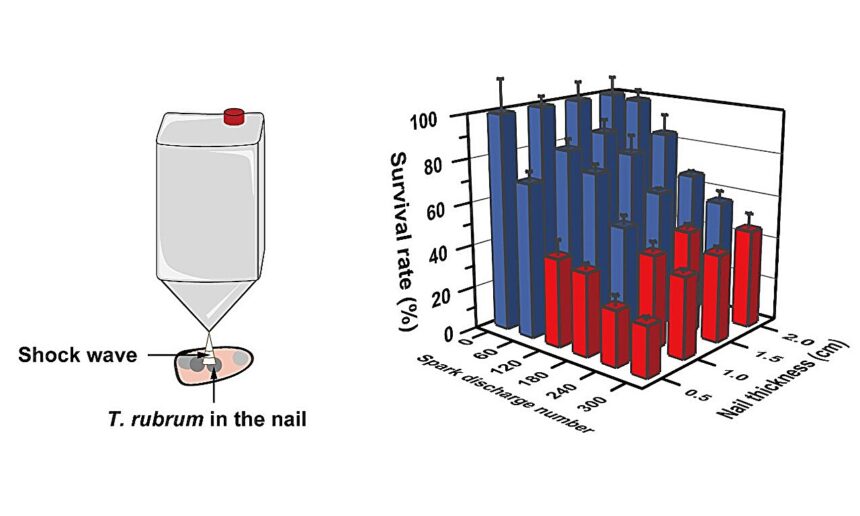Recently, the team led by Prof. Huang Qing from the Hefei Institutes of Physical Science of the Chinese Academy of Sciences proposed using a portable pulsed cold air plasma jet (PP-CAPJ) to treat Trichophyton rubrum in nails. They revealed that the shock wave from PP-CAPJ could effectively kill this fungus.
This study was published in Applied Physics Letters.
Onychomycosis is a fungal nail infection, which is the most common nail disease. Trichophyton rubrum is a common harmful fungus in onychomycosis. Because it is hidden in nails, it is difficult to kill directly using general methods.
In this study, the researchers used a portable pulsed cold air plasma jet device to kill Trichophyton rubrum in nails, and studied the related mechanism. They established a nail model of onychomycosis infection, and then used PP-CAPJ to treat nails of different thicknesses.
They found that PP-CAPJ had a prominent killing effect on Trichophyton rubrum in nails of a certain thickness, and the PP-CAPJ device could kill 90% of Trichophyton rubrum in nails with 300 spark discharges.
Furthermore, researchers experimentally verified the velocity and pressure of the shock wave generated by PP-CAPJ, finding that the device could generate instantaneous pressure greater than 1 MPa at the nail surface. They found that the shock wave generated by PP-CAPJ destroyed the cell membrane of Trichophyton rubrum in nails.
This represents a new type of application of low-temperature plasma technology, as well as a new mechanism for killing fungi using PP-CAPJ.
More information:
Ying Zhang et al, Study of the effect of shock wave from a portable pulsed cold air plasma jet device on inactivation of Trichophyton rubrum in nails, Applied Physics Letters (2024). DOI: 10.1063/5.0206605
Provided by
Chinese Academy of Sciences
Citation:
New plasma jet technology effectively treats fungal nail infections (2024, July 9)
retrieved 10 July 2024
from https://phys.org/news/2024-07-plasma-jet-technology-effectively-fungal.html
This document is subject to copyright. Apart from any fair dealing for the purpose of private study or research, no
part may be reproduced without the written permission. The content is provided for information purposes only.











